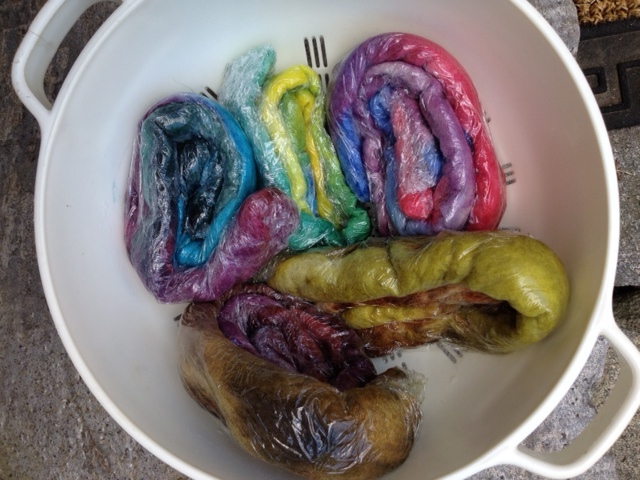You will need:
A digital scale that can weigh In grams and pounds
Plastic table cover
Buckets
Measuring spoons
Smooth sided clear plastic cups
Colanders
Plastic knives or stirring implements of some kind
Sponges and rags for wiping spills
Rubber gloves
A thermometer
Pots with lids
9x13 roasting pan--good for casserole dyeing
Saran Wrap
Synthrapol
Stencil brushes (large work best)
Plastic syringes without the needle (you can get these at farm supply stores) that measure in milliliters or cc's (these are both the same)
Canning jar steamer kettle with wire rack insert
Dyes stock containers (I use the plastic disposables with good fitting lids, that hold 3-4 cups of liquid)
These items will get you started. You may wish to add others as you go. I store my tub in the basement, where it is cool, and I keep the extra dyestuff there as well, rather than in the attic. I keep a couple of old house screens in my basement to dry the fibers on out of doors on a sunny day. Most of my dyeing days are in the summer and fall, when the weather is nice, and I can make a mess outdoors and not have to worry about it! Then, I have beautiful dyed fiber to work with all winter long at my spinning wheel. The photos below show some of the rich colors I got on this fleece. I had to be very careful when dyeing these locks, felting can be an issue when working with them and the hot dye liquor! Avoid agitation, and you should be fine. I can't wait to card and spin some of these locks into yarns! I can envision some interesting art yarns with these....











